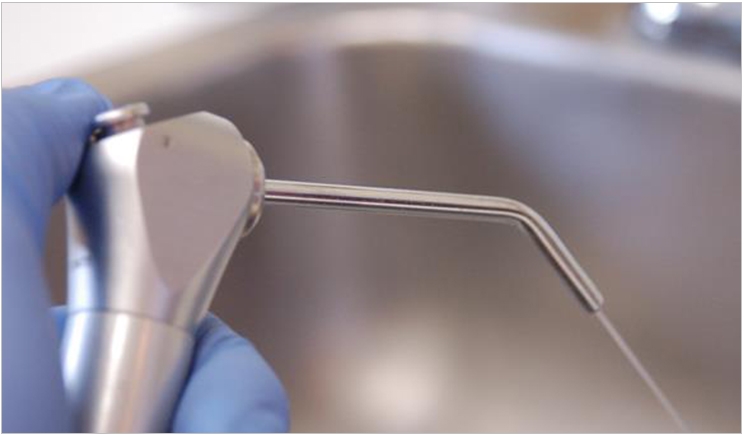
Water is one of life’s most important resources. It is critical for growing food, producing goods, sanitation, recreation, transportation, and much more. Most people don’t realize how important water is to dental offices, as dental practitioners use water for virtually every appliance in their practice.
Water quality is often overlooked. Poor water quality can wreak havoc on dental equipment. Practices often (innocently) fail to follow appropriate dental waterline protocols, and they frequently use inefficient ways to purify, process, or purchase water.
These issues can easily be resolved by putting the right protocols and systems in place. Re-evaluating your current water-related procedures might help your practice improve patient care, become more productive, and, ultimately, increase profit.
Patient Care
As water quality relates to routine patient care, the primary concern is the microbial quality of the water used in the dental delivery system. The well-known problem of microbial contamination in dental unit waterlines is compounded by the design of the dental equipment itself. Several factors including small-diameter waterlines, low flow rates, long periods of stagnation, waterline termination (“dead legs”), and even “suck-back” from patients all contribute to creating a “perfect storm” of microbial contamination.
Microbial contamination is measured in colony-forming units per milliliter of water—typically expressed as CFU/mL. Both the Centers for Disease Control and Prevention (CDC) and the ADA recommend that water used in nonsurgical dental procedures meet the Environmental Protection Agency’s former regulatory standards for drinking water, which is <500 CFU/mL of heterotrophic micro-organisms in water.
To meet these guidelines, it is critical for dental practitioners to follow CDC-recommended protocols, such as purging all water-bearing lines for at least 20 to 30 seconds between patients. The Canadian Dental Association also recommends purging all waterlines at the beginning of each work day by flushing the lines with water for at least 2 to 3 minutes. Due to the complex design of dental delivery systems, it is very important to use waterline cleaners and antimicrobial products periodically for proper dental waterline care as well.
By following these guidelines, practices can mitigate the risk of patients being exposed to contaminated water. Having the right system in place, including following the appropriate protocols and performing periodic waterline cleaning and testing, can ensure that patients benefit from practices using the highest-quality water possible.
Staff Productivity
Because water is used in almost every dental procedure, having the right systems in place can transform a practice’s productivity. By using water filtration and purification systems appropriate for dentistry, a practice can eliminate the ongoing cost of buying distilled water from a delivery service or store—not to mention saving the staff time required to run out to purchase water.
Water filtration and purification systems also ensure a virtually endless supply of water, so practices will never have to worry about running out of water mid-procedure. Producing water in the office additionally ensures more consistent water quality than ad hoc purchases of bottled water that might (or might not) be as “pure” as advertised.
By having the right water systems in place, practices can eliminate the expense and staff time spent purchasing water, while also eliminating concerns about water quality and empowering staff to focus solely on the patient.
Improving the Bottom Line
When it comes to the bottom line, an efficient and effective water system will save most practices time and money. The use of the right water filtration system is not just more convenient (and usually less expensive) than purchasing bottled water, but it can also protect practices’ dental delivery systems from sediment, scale, particulate, and contaminants that can harm dental equipment.
Plus, systems that deliver the appropriate grade of water quality in the sterilization center can benefit the bottom line by boosting staff efficiency tremendously. Water systems designed specifically for sterilization centers can fill autoclaves and dental bottles with appropriate grades of water, provide final-rinse water for instrument washers to help prevent spotting and corrosion of instruments, and can even manage steam sterilization wastewater automatically. All of these functions and conveniences free office staff to focus on high-quality patient care and can facilitate increased patient volume to benefit the bottom line.
Conclusion
With water being so central to the operations of modern dental practices, it is well worth evaluating how your practice is handling its water. It is critical to ensure your staff is educated about CDC-recommended waterline protocols and following them diligently. You might also consider talking to your preferred dental dealer about solutions that might improve your water quality and enhance your staff’s efficiency. Finally, visit thebookondentalwater.com for comprehensive, high-level guidance on all of the ways water quality affects your practice.
Mr. Chandler has nearly 40 years of experience in water treatment technologies. He is the founder and president of Vista Research Group, which provides a complete line of water treatment, purification, and steam processing solutions used by thousands of dental practices throughout the US and Canada. He holds multiple patents; a bachelor’s degree with concentrations in conservation, biology, and chemistry; and a master of higher education administration degree from Kent State University. And, he is the author of The Book on Dental Water, which is available now in multiple formats at thebookondentalwater.com. He can be reached at jim@vistaresearchgroup.com.
Disclosure: Mr. Chandler is the author of The Book on Dental Water and the president of Vista Research Group, which manufactures several products designed to meet the water treatment, purification, and processing needs of dental practices.
Related Articles
Every Practice Needs an Infection Control Coordinator
Mycobacterial Outbreak Teaches a Hard Lesson About Infection Control
Study Finds Bacteria in Dental Unit Waterlines











